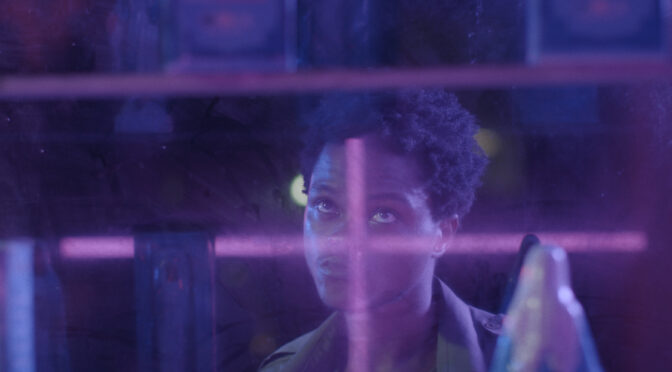Translated by: Benedetta Francesca De Rossi
Article by: Marco di Pasquale
What Ery Claver tries to tell metaphorically with Our Lady of The Chinese Shop is the exploitation of Angola. After Portuguese colonialism, the country became the target of the economic interests of China, which has recently invested in several African countries to profit from the enormous mineral and natural resources.
Read more: “OUR LADY OF THE CHINESE SHOP” BY ERY CLAVERIn a poor neighbourhood of Luanda, during the Covid-19 pandemic, hopes and fears are projected in plastic icons of Our Lady sold in a small Chinese shop. The owner, Zhang Wei (Meili Li), punctuates the timing of the story and his voice, in a mysterious and poetic tone, offers the viewer a further interpretation of what is shown by the camera. He, the omniscient narrator, sees and knows everything about the stories that intertwine in the film: Domingas (Cláudia Púcuta), consumed by grief at the loss of her daughter, and Zoyo (Willi Ribeiro) in search of a missing friend. Their repressed resentment is reflected in the restless movements of the camera, which does not stop even in the most static scenes. The two characters metaphorically represent the country’s feelings of revenge against its rulers. If the old Portuguese colonisation is represented by the strong presence and importance of the Catholic religion in the community, Chinese economic dominance is shown through the bright neon signs of Xiaomi, a smartphone company.

The society represented by Ery Claver seems desperate for guidance. Religion has nothing to offer but plastic figures, while politics and its decadence are represented by a surreal and parodistic meeting of the Chinese Communist Party, staged in a city arena that was never completed and is now in ruins. The only way, the director suggests, is that of rebellion. Zoyo, in an act of desperation, destroys the Chinese shop and its icons, while Domingas finds her emancipation in revenge on her abusive husband responsible for the death of her daughter. The discourse brought forward by Ery Claver, through allegories and shots with a strong symbolic charge, takes on a universal character of protest against the new and silent forms of exploitation and colonialism perpetrated in poor countries throughout the world.

